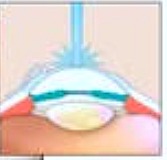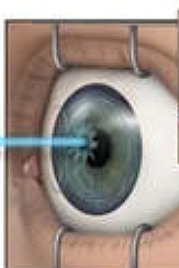|
Lasik Enhancement Procedure
Many people ask about Lasik enhancement procedure. While most patients enjoy 20/40 vision or better from their surgery, not every Lasik surgery gives perfect results. Some patients experience an over correction or under correction that leaves their vision less than clear. If you’re doing your homework, you may already have learned that these are known risks of Lasik surgery. So, maybe you’re wondering how Lasik can have such high success rates when Lasik enhancement procedure is something to consider before hand. Over 95% of patients achieve better than 20/40 vision after surgery. Most have 20/20 and some have better than 20/20. This procedure is better at treating nearsightedness than farsightedness. Results are best for patients between ages of 18 and 40. In order to view the content, you must install the Adobe Flash Player. Please click here to get started.
So, Who Needs a Lasik Enhancement Procedure
Three groups of patients account for the highest rate of enhancements.These are patients who were corrected for farsightedness, those with a higher preoperative lens prescription, or those over the age of 50. Farsightedness is more difficult to correct than nearsightedness. This is because the farsighted cornea is flatter, and must be shaped into a steeper dome. The nearsighted cornea is too dome-shaped and is corrected by flattening it. Shaping a dome is more difficult than flattening a dome. You can see why it’s easier to correct nearsightedness than farsightedness. It’s also why more farsighted corrections need Lasik enhancement.

Patients who have higher corrective lens prescriptions require more diopters of correction. With a lower power lens prescription it’s easier to predict how much tissue should be ablated. The surgeon must predict how much more tissue needs to be ablated to correct farsightedness. The extra tissue ablation is more difficult to predict accurately. Some surgeons prefer to under correct. Once the corneas have healed it is possible to get more accurate results with an enhancement. Patients over the age of 50 experience eye changes that are normal to aging. Presbyopia can begin in a person’s early 40s. It is the result of natural stiffening of the crystalline lens and weakening of the ciliary muscle. The percent of patients over 50 with 20/20 or 20/30 vision one year after laser eye surgery is not as great for this group as for younger patients. An enhancement might help improve these patients’ vision. Patients whose vision is still blurry after three to six months often ask about Lasik enhancement. Doctors vary in their policies about doing enhancements, so make sure you know exactly what you can expect from your surgeon. Some doctors under correct knowing that there is a tendency for slight reversion after surgery. They’ll wait to make sure your vision is stable before doing an enhancement Is the Enhancement Different From the Original Lasik?
Lasik enhancement procedure as a follow-up laser ablation is much like the original surgery. It is used to refine the shape of the cornea after it has stabilized from the original surgery. So the procedure is usually shorter and ablates less tissue. Most follow-up patients achieve clear vision with only one enhancement, though a few require a second enhancement. What About Cost?
Some doctors charge extra for enhancements. Others include it in the original price and place a time limit on doing enhancements. If you need treatment after that limit passes, you may have to pay for another laser surgery. These are questions you need to ask your Lasik surgeon during your first visits, before you have signed any agreements. What Does an Eye Surgeon’s Enhancement Rate Say About His Qualifications?
Basically, the number of Lasik enhancement surgeries an eye surgeon does is not an indication of his qualifications or skill. He might be a surgeon who specializes in higher refractive errors, working with older patients, or regularly under corrects. These are just some of the circumstances that might cause one surgeon to do more enhancements than another. He might be reluctant to do enhancements. He might think that enhancements make his statistics look bad, or maybe his enhancements aren’t as profitable as original Lasik surgeries. A better indicator of a qualified and skilled doctor is his patient satisfaction statistics. Satisfied patients say far more than low re-do statistics. Return From Lasik Enhancement Procedure To Lasik Eye Surgery |





